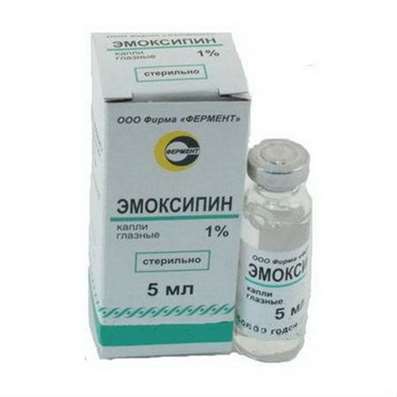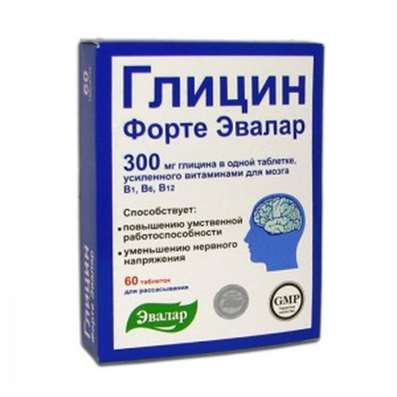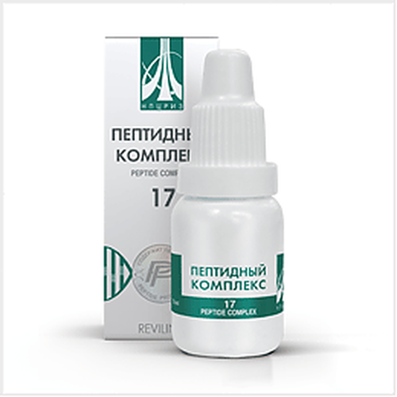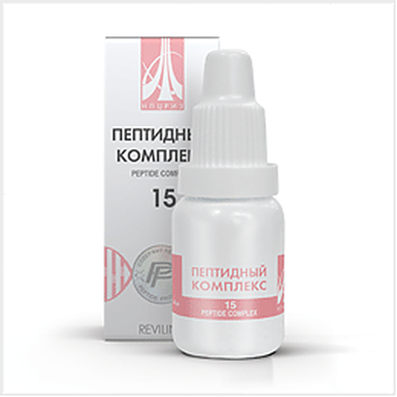Instruction for use: Akriderm SK
I want this, give me price
Active substance Betamethasone + Salicylic acid
ATX code D07XC01 Betamethasone in combination with other drugs
Pharmacological group
Glucocorticosteroids in combinations
Nosological classification (ICD-10)
L20 Atopic dermatitis
Itchy atopic eczema, Common neurodermatitis, Allergic skin diseases, Allergic skin diseases of non-infectious etiology, Allergic skin diseases of non-microbial etiology, Allergic skin diseases, Allergic skin lesions, Allergic manifestations on the skin, Allergic dermatitis, Allergic diathesis, Allergic itching dermatosis, Allergic Skin Disease, Allergic skin irritation, Dermatitis allergic, Atopic dermatitis, Dermatosis allergic, Diathesis exudative, Skin Allergic Disease, Skin allergic reaction to medicinal and chemical preparations, Skin reaction to medication, Skin and allergic disease, Acute eczema, Chronic atopic dermatitis, Exudative diathesis, Itching allergic dermatosis
L30.1 Dyshidrosis [pomfolix]
Skin dyshidrosis, Pomfolix, Eczema dysgidrotic, Dyshidrotic eczema, Infected dyshidrosis, Dyshidrosis, Dyshidrotic dermatitis
L40 Psoriasis
Chronic psoriasis with diffuse plaques, Generalized psoriasis, Psoriasis of the scalp, Psoriasis of the scalp, Generalized form of psoriasis, Psoriasis dermatitis, Psoriasis complicated by erythroderma, Invalidative psoriasis, Isolated psoriatic plaque, Exfoliative psoriasis, Psoriatic Erythroderma, Psoriasis with eczematosis, Hyperkeratosis in psoriasis,Inverse psoriasis,Psoriasis eczematous, Dermatosis of psoriasis, Psoriasis of the genitals, Psoriasis with lesions of hairy areas of skin, Erythrodermal psoriasis, Chronic psoriasis of the scalp, Chronic psoriasis, Ordinary psoriasis, Refractory psoriasis, Kebner phenomenon, Scaly lichen
L43 Red Leaf Flat
Lishay Wilson, Erosive-ulcerative form of red flat lichen, Warty forms of red lichen, Red lichen, Flat lichen, Kebner phenomenon
L85 Other epidermal thickenings
L85.2 Point-to-point keratosis (palmar-plantar)
Hyperkeratosis of the skin, Hyperkeratoses, Hyperkeratosis, Tylotic Eczema, Hyperkeratosis in psoriasis
L85.9 Epidermal thickening, unspecified
Q80 Congenital ichthyosis
Ichthyosis is hereditary
Composition and form of release
AkridermŽ
Cream 1 g
Betamethasone dipropionate 0.64 mg
Auxiliary substances: nipagin; Paraffin wax; petrolatum; Propylene glycol; Oil vaseline medical; Alcohol cetostearyl emulsifying type A or wax emulsifying type "Lanette SX"; Disodium ethylenediaminetetraacetic acid (Trilon B); Sodium sulfite 7-water; purified water
In tubes of 15 or 30 g; In a pack of cardboard 1 tuba.
AkridermŽ GENTA
Cream for external use 1 g
Betamethasone dipropionate 0.64 mg
Gentamycin sulfate 1 mg
Auxiliary substances: nipagin; Propylene glycol; Oil vaseline; Macrogol ether 20 cetostearyl; Cetostearyl alcohol; Disodium ethylenediaminetetraacetate; Sodium phosphate disubstituted; Potassium phosphate monosubstituted; purified water
In tubes of 15 or 30 g; In a pack of cardboard 1 tuba.
AkridermŽ GK
Cream for external use 1 g
Betamethasone dipropionate 0.64 mg
Clotrimazole 10 mg
Gentamycin sulfate 1 mg
Auxiliary substances: petrolatum; Propylene glycol; Oil vaseline medical; Cetostearyl alcohol; Macrogol ester of cetostearyl; Trilon B; Sodium dihydrogen phosphate dihydrate (sodium phosphate-acid monosubstituted 2-water); purified water
In tubes of 15 or 30 g; In a pack of cardboard 1 tuba.
AkridermŽ SC
Ointment for external use 1 g
Betamethasone dipropionate 0.64 mg
(Equivalent to 0.5 mg betamethasone)
Salicylic acid 30 mg
Auxiliary substances: petrolatum; Vaseline oil
In tubes of 15 g or 30 g; In a pack of cardboard 1 tuba.
Description of dosage form
The cream is white or almost white in color.
Ointment - from white to white with a yellowish or kremovatym shade of color. A weak specific odor is allowed.
Characteristic
AkridermŽ
Glucocorticosteroid for topical application.
AkridermŽ GENTA
Combination drug for external use (glucocorticosteroid + antibiotic-aminoglycoside).
AkridermŽ GK
Combination drug for external use (glucocorticosteroid + antibiotic-aminoglycoside + antifungal agent).
AkridermŽ SC
Combination drug for external use (glucocorticosteroid + keratolytic agent).
pharmachologic effect
AkridermŽ
Anti-inflammatory, anti-allergic, antiexudative, decongestant, antipruritic
AkridermŽ GENTA
Anti-inflammatory, anti-allergic, antibacterial
AkridermŽ GK
Anti-inflammatory, anti-allergic, antibacterial, antifungal
AkridermŽ SC
Anti-inflammatory, antiallergic, antiseptic, keratolytic
Pharmacodynamics
The corticosteroid betamethasone dipropionate inhibits the accumulation of leukocytes, the release of lysosomal enzymes and proinflammatory mediators in the inflammatory focus, inhibits phagocytosis, reduces vascular-tissue permeability, prevents the formation of inflammatory edema.
Gentamicin is a broad-spectrum antibiotic from the aminoglycoside group. Has a bactericidal effect against the causative agents of primary and secondary bacterial skin infections. It is active against gram-negative bacteria: Pseudomonas aeruginosa, Aerobacter aerogenes, Escherichia coli, Proteus vulgaris, Klebsiella pneumoniae; Gram-positive bacteria: Streptococcus spp. (Sensitive strains of beta and alpha-hemolytic streptococcus group A), Staphytococcus spp. (Coagulase-positive, coagulase-negative and some strains producing penicillinase). Inactive against anaerobes, fungi and viruses.
Clotrimazole has an antifungal effect due to a disruption in the synthesis of ergosterol, which is an integral part of the cell membrane of fungi. It is active against: Trichophyton rubrum, Trichophyton mentagrophytes, Epidermophyton floccosum, Microsporum canis, Candida albicans, Malassezia furtur (Pityrosporum orbiculare).
Salicylic acid provides keratolytic, antimicrobial action, eliminates horny layers and promotes deeper penetration of GCS (glucocorticosteroids).
Indications
AkridermŽ
Allergic skin diseases (including acute, subacute and chronic contact dermatitis, occupational dermatitis, seborrheic dermatitis, atopic dermatitis, sun dermatitis, neurodermatitis, pruritus, dyshidrotic dermatitis, eczema); Acute and chronic forms of non-allergic dermatitis; psoriasis.
AkridermŽ GENTA
Dermatitis (simple and allergic), especially secondarily infected, eczema (atopic, childish, coin-like), atopic dermatitis (diffuse neurodermatitis), simple chronic lichen (limited neurodermatitis), sun dermatitis, exfoliative dermatitis, radiation dermatitis, diaper rash, psoriasis, itching.
AkridermŽ GK
Treatment of dermatoses complicated by primary and / or secondary infection, pityriasis, limited and diffuse neurodermatitis, dermatomycosis (including inguinal, stop) caused by drug-susceptible pathogens.
AkridermŽ SC
Local treatment of dermatoses accompanied by hyperkeratosis: psoriasis, limited and diffuse neurodermatitis, lichen planus, eczema, dyshidrotic dermatitis, ichthyosis and ichthyosiform changes.
Contraindications
Hypersensitivity to any of the components of the drug, skin tuberculosis, cutaneous manifestations of syphilis, chickenpox, herpes simplex, skin post-vaccination reactions, open wounds, lactation and children under 1 year; In addition to AkridermŽ: trophic ulcers of the lower leg, rosacea, acne vulgaris; In addition to AkridermŽ GK: in the treatment of external otitis - perforation of the tympanic membrane; Additionally for AkridermŽ SK: perioral dermatitis.
Application in pregnancy and lactation
Safety of topical application of GCS in pregnant women is not established; The prescription of drugs of this group during pregnancy is justified only if the potential benefit exceeds the possible risk. During pregnancy, drugs of this group should not be used in high doses or for a long time.
It is not established whether local application of GCS can cause them to appear in the mother's milk, therefore, the question of stopping breastfeeding should be addressed.
Side effects
When topical application of GCS can occur: burning, irritation, dry skin, folliculitis, hypertrichosis, acne-like eruptions, hypopigmentation, perioral dermatitis, allergic contact dermatitis. With prolonged use, as well as the use of occlusive dressings - skin maceration, secondary infection, skin atrophy, sweating, purpura.
AkridermŽ
When applied to extensive body surfaces, mainly in children, systemic side effects of GCS may occur (hyperglycemia, glucosuria, reversible suppression of adrenal cortex function, manifestation of Cushing's syndrome).
AkridermŽ GENTA
AkridermŽ GK
When applied to extensive body surfaces, mainly in children, the occurrence of systemic side effects of GCS (hyperglycemia, glucosuria, reversible suppression of adrenal cortex function, manifestation of Cushing's syndrome) and gentamicin (nephrotoxic and ototoxic effect) may occur.
AkridermŽ SC
When applied to extensive body surfaces, mainly in children, systemic side effects of GCS and salicylates may occur.
If there are any side effects not described in the instructions, you should consult your doctor.
Interaction
Interactions of the drug with other drugs have not been identified.
Dosing and Administration
AkridermŽ
AkridermŽ GENTA
AkridermŽ GK
Outwardly. Apply a thin layer on the affected area of the skin 2 times a day - in the morning and in the evening. Another frequency of use can be determined by the doctor, based on the severity of the disease. In light cases, the cream is sufficient to apply, as a rule, 1 time per day; With more severe lesions may need more frequent use.
The duration of treatment depends on the effectiveness and tolerability of therapy and is 2-4 weeks.
If clinical improvement does not occur, it is necessary to clarify the diagnosis.
AkridermŽ SC
Outwardly. Apply a thin layer on the affected area of the skin 2 times a day - in the morning and in the evening. Another frequency of use can be determined by the doctor, based on the severity of the disease. In light cases, the ointment is sufficient to apply, as a rule, 1 time per day; With more severe lesions may need more frequent use.
Overdose
Acute overdose is unlikely, but with excessive or prolonged use of drugs, a chronic overdose is possible, accompanied by signs of hypercorticism: hyperglycemia, glucosuria, reversible suppression of adrenal cortex function, manifestation of Cushing's syndrome.
Treatment: symptomatic therapy. In the case of chronic toxic effects, a gradual withdrawal of the drug is recommended.
special instructions
If there are signs of increased sensitivity or skin irritation associated with the use of drugs, you should stop treatment and choose the patient adequate therapy.
With prolonged treatment, when applying the drugs on the vast surface of the skin, with the use of occlusive dressings, as well as in children, systemic absorption of GCS is possible.
For children from 1 year, drugs are prescribed only according to strict indications and under medical supervision, t. It is possible to develop systemic side effects associated with betamethasone. When applying the drug on extensive surfaces and / or under occlusive dressing, it is possible to suppress the function of the hypothalamic-pituitary-adrenal system and the development of symptoms of hypercorticism, a decrease in the excretion of growth hormone, an increase in intracranial pressure can be observed.
On the skin of the face more often than on other surfaces of the body, after prolonged treatment of the local SCS, atrophic changes may appear; The course of treatment in this case should not exceed 5 days.
Cream and ointment are not intended for use in ophthalmology. Avoid contact with eyes.
With prolonged use of the drug, it should be canceled gradually.
storage Conditions
At a temperature of 15-25 ° C.
Keep out of the reach of children.
Shelf life
Cream for external use 0.064% - 4 years.
Cream for external use - 2 years.
Cream for external use 0.05% - 4 years.
Ointment for external use - 3 years.
Do not use after the expiry date printed on the package.

 Cart
Cart





